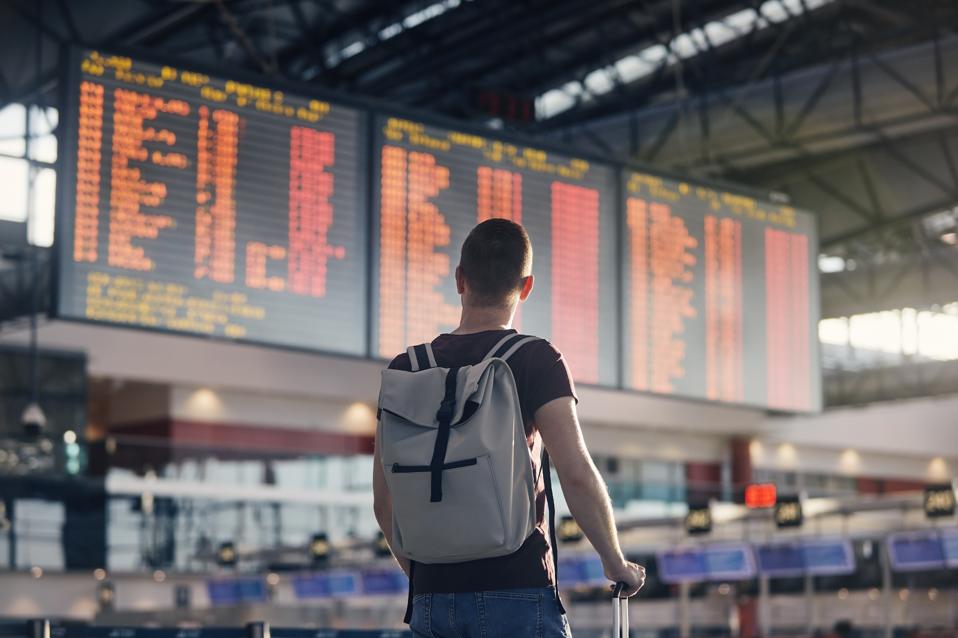Topline
Thunderstorms snagged air traffic along the Atlantic seaboard Wednesday, causing the FAA to issue ground stops for airports in the New York and Washington metro areas.
Key Facts
Six major East Coast airport hubs—John F. Kennedy, LaGuardia and Newark in the New York area and Baltimore, Reagan National and Dulles in the Washington metro area—were under ground stops Wednesday afternoon due to thunderstorms, while Philadelphia was under a ground delay.
By 4 p.m. EDT, more than 3,600 flights were delayed in the U.S., according to Flightaware data.
U.S. airports with triple-digit flight delays included Chicago O’Hare, LaGuardia, John F Kennedy, Newark, Reagan National, Atlanta’s Hartsfield-Jackson and Denver.
Southwest Airlines, JetBlue Airways and Delta Air Lines issued travel advisories and waivers allowing passengers flying in and out of impacted airports to rebook for travel through Saturday, Aug. 16.
What Is A Ground Stop In Aviation?
A ground stop is a temporary hold on flights to manage air traffic flow and ensure safety. When an airport is under a ground stop, all aircraft must remain on the ground at their departure airport. If Dulles airport is under a ground stop, it impacts both departures and arrivals.
Are Ground Stops Unusual During Thunderstorms?
Not at all. The FAA frequently issues a ground stop or a ground delay, another tool to manage traffic flow, when an airport is impacted by a severe storm. Both types of programs are common in the summer, when high temperatures combine with humidity and increase the likelihood and severity of thunderstorms.
Why Are So Many Flights Delayed In Other Regions Across The U.s.?
A significant weather issue in one region can lead to a national air travel headache because of how airlines reuse planes and crews for multiple trips during the day. A flight delay at LaGuardia can prevent a plane from making it to Denver, which can in turn bump back the same plane’s subsequent flight to Seattle. When thousands of flights are delayed, it creates a domino effect throughout the rest of the day and into evening.
Big Number
45,000. That’s how many flights the FAA manages in the U.S. on any given day, on average.

